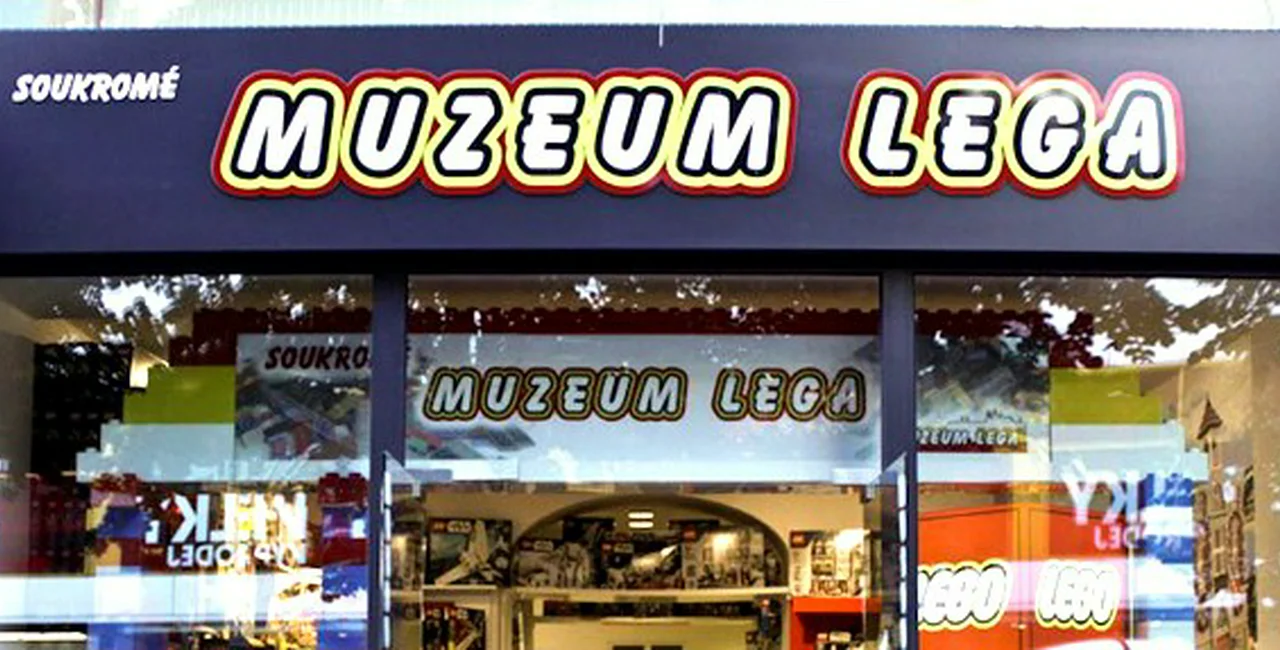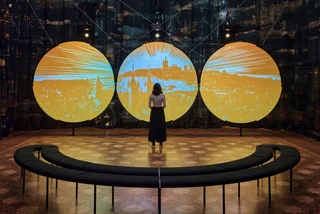It’s a toy legend that gave most kids their first taste of bricklaying. Does Prague’s Lego Museum have what it takes to keep little tourists—and their parents—amused?
Now that I’m on review number five of this series, I consider myself something of an expert on Prague’s tourist museums. Having gazed at male chastity belts, iron maidens, and waxwork models of Hollywood has-beens, I believe now I’ve earned the right to observe that the majority of these museums are either incredibly trashy or plain dull. They’re also, more often than not, a rip-off.
I was therefore skeptical about the Lego Museum (Muzeum Lego). First of all, it’s located in a Lego shop on Národní—prime tourist territory—and so I expected one dimly lit room in the basement kitted out with a couple of retro Lego kits and a naff reconstruction of the Eiffel Tower.
The first room does have a mock-up of Old Eiffel. Just as I feared, it bears only a scant resemblance to the real thing. However, there’s also a huge Lego layout of a city suburb—and when I say huge, I mean at least six metres long—complete with those delightful details that made playing with the tiny colored plastic bricks such a joy back in childhood. I spotted a heliport, a basketball court, a pig farm, a holiday villa, as well as a whole stack of construction cranes. This clearly must be an up-and-coming suburb of Lego-oplis.
In a cabinet on the left-hand side of that first room, I came face to face with the toy that kept me amused at primary school—Technic Lego. This stuff was more than just bricks: it has wheels and cogs and axles so you can build realistic construction machines. Puzzling over those plastic components was far more enjoyable than our class’s attempt to recreate the Bayeux Tapestry by finger knitting suits of armour.
Don’t ask.
Room Two has more models on display in glass cabinets. This time transport is the main theme, so you’ll find tow trucks, helicopters, and speedboats. I found all of this more interesting when the models were set up to interact together as a part of a city rather than just displayed on shelves in rows. My guess is that most kids would feel the same. The only attempt in the whole museum to make the exhibits interactive is here: swipe your barcode over a diode and the fire engine’s siren starts to flash. It’s a shame there aren’t more little touches like this to keep those with short attention spans engaged.
The sheer diversity of the different Lego ranges which exist is mindboggling. There’s Lego Castle (defend your fort with a Lego catapult against a Lego dragon), Pirate Lego (defend your Lego galleon against Lego sharks and sea-serpents), Lego Pharoah (defend your Lego Mummy against Lego explorers in the Lego Pyramid), Viking Lego, Lego Atlantis, Lego Space— and we haven’t even got to the movie tie-ins yet. Some of these have aged better than others—it seems right that while there’s an entire room devoted to Star Wars, there’s only half a shelf that’s Indiana Jones related. The Star Wars room will be the highlight of the trip for kids and adults alike: who could resist the chance to see a Lego R2-D2, Millennium Falcon, or Darth Vader?
And there’s the main appeal of this attraction for the grown-ups: a trip down Memory Lane straight to Nostalgiaville. While those tiny pieces might have driven Mum to distraction by disappearing up the Hoover or becoming painfully wedged in the fleshy part of her foot when she stood on them by accident, for kids Lego meant fun times. Despite being in my third decade, I loved marvelling at the myriad of sets on display. Perhaps this isn’t so surprising: according to the company’s own market research, adult users of Lego—or AFOL as they’re known—make up 5% of total sales.
While there’s entertainment to be had here, most small visitors will be disappointed that they can look but not touch. There is a room right near the exit where you can play with those famous interlocking bricks, but only Duplo ones—the toddler version of Lego with bigger blocks. This is bound to be a let-down for any child Lego fan over the age of four who would no doubt dismiss these as babyish. Other negatives include the 20 CZK surcharge for taking photos, which seems petty as the basic ticket price—200 CZK for adults, 130 CZK for children—ain’t cheap.
Overall though, this Prague tourist attraction gets a tentative thumbs-up. There were definitely more models for your money than I’d expected: according to the blurb on the ticket, there are more than a million little building blocks in use. It’s also likely that it’s about the right length for most children under ten who are likely to get testy if dragged around any museum for too long, even a Lego one.
Be warned though: some of the stuff on offer in the shop is jaw-droppingly pricey. Fancy creating your own Lego version of the Eiffel Tower at home? Hand over a mere 60,000 CZK and the right kit can be yours.
If I ever have that kind of cash to spare, I might just fly the whole family to Legoland instead.
Museum of Lego
Národní 31, Prague 1
+420 775 446 677
http://www.muzeumlega.cz/
Opening hours: daily 10:00–20:00
Adults 200 CZK; Children 130 CZK;charge for taking photographs 20 CZK
Related articles
- Karel Zeman Museum – The pioneering special effects wizard gets his due
- Museum of Communism – Red-lensed nostalgia or capitalist exploitation?
- Train Travel Alternatives – Is competition possible on the Czech railway?
- Museum of Medieval Torture Instruments – A gruesome collection of pain-inducing paraphernalia
- Homeless Tours of Prague – Take a different view of the Golden City
- Secrets of the Prague Metro, Part 1 – The city’s underground train system leads a double life












 Reading time: 5 minutes
Reading time: 5 minutes 
































